Abstract
This preliminary study explored the roles of knowledge, attitudes, and significant others on decisions of older African-American women to enroll in a clinical trial involving estrogen and osteoporosis. Sixteen older African-American women (average age 75 years) participated in three focus groups. Twelve of the women had enrolled in the clinical trial and four, although eligible, refused to enroll. Discussions revealed that knowledge of osteoporosis and estrogen and expectations of personal rewards and group benefits from medical research appear to differentiate the women who participated in the clinical trial from those who refused. The women who participated also perceived the research institution as accessible. In addition, assuring full disclosure of testing procedures and test results eased their apprehensions about participation. However, the women who refused to enroll saw no personal benefit and were unwilling to expose themselves, in part because of their age, to the risks of taking estrogen and the uncertain outcomes of the clinical trial. The study illustrates how focus groups can be used to develop multiple strategies to enable recruitment of older African-American women with different demographic characteristics, levels of knowledge, and attitudes toward a disease and medical research.
Full text
PDF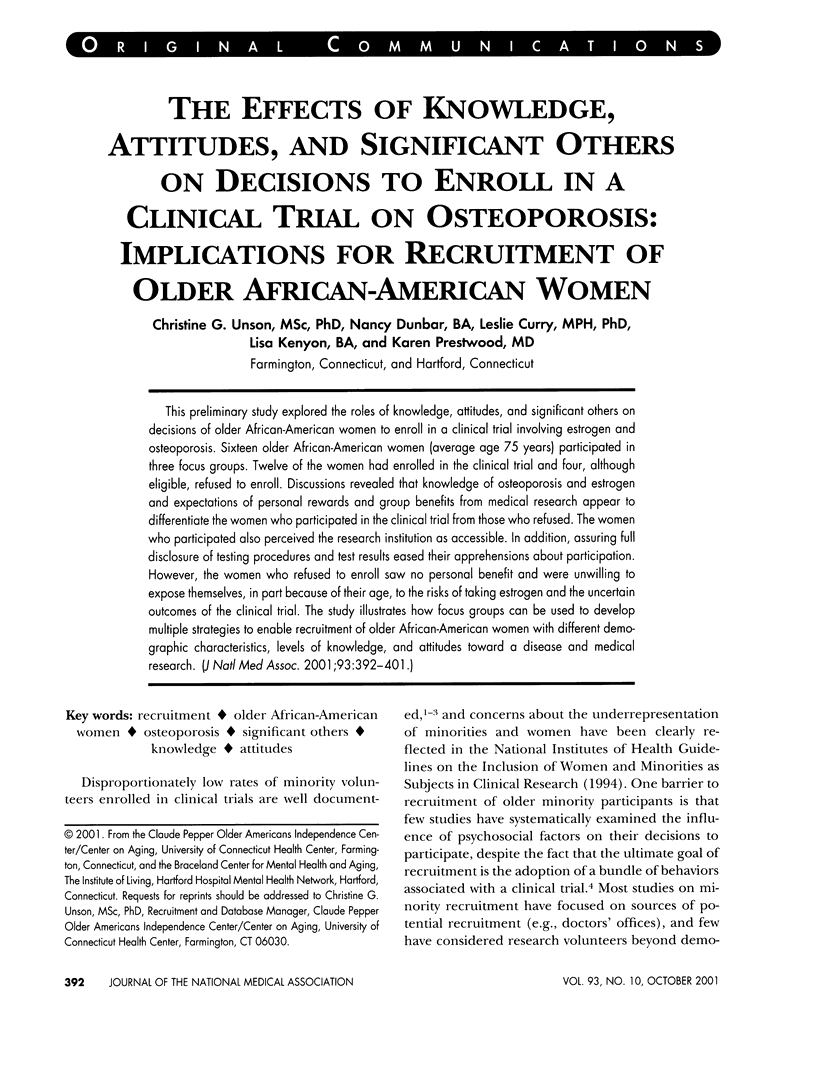

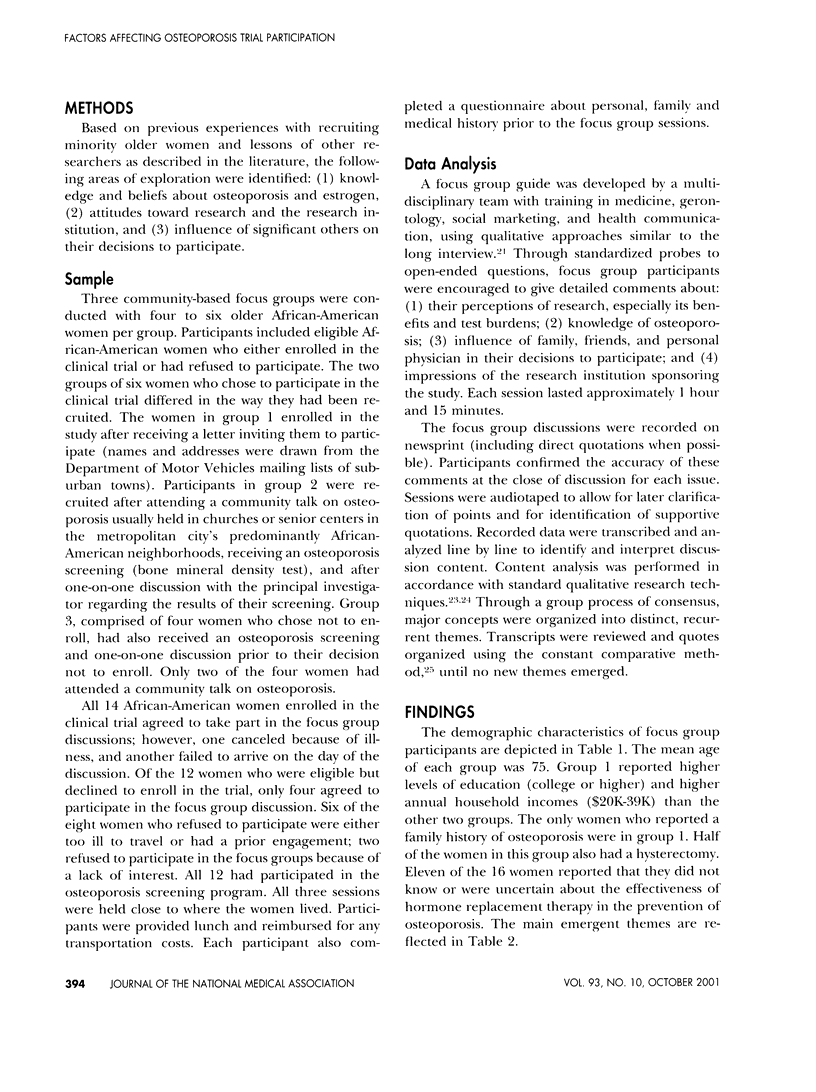
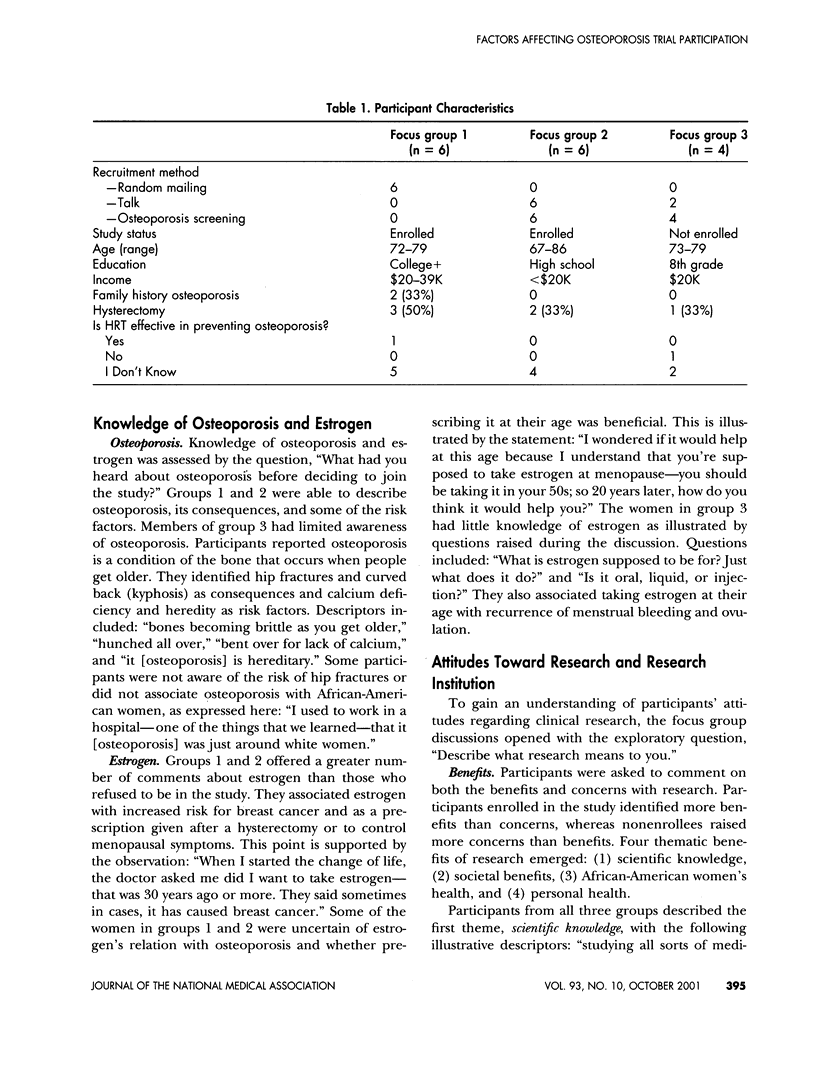
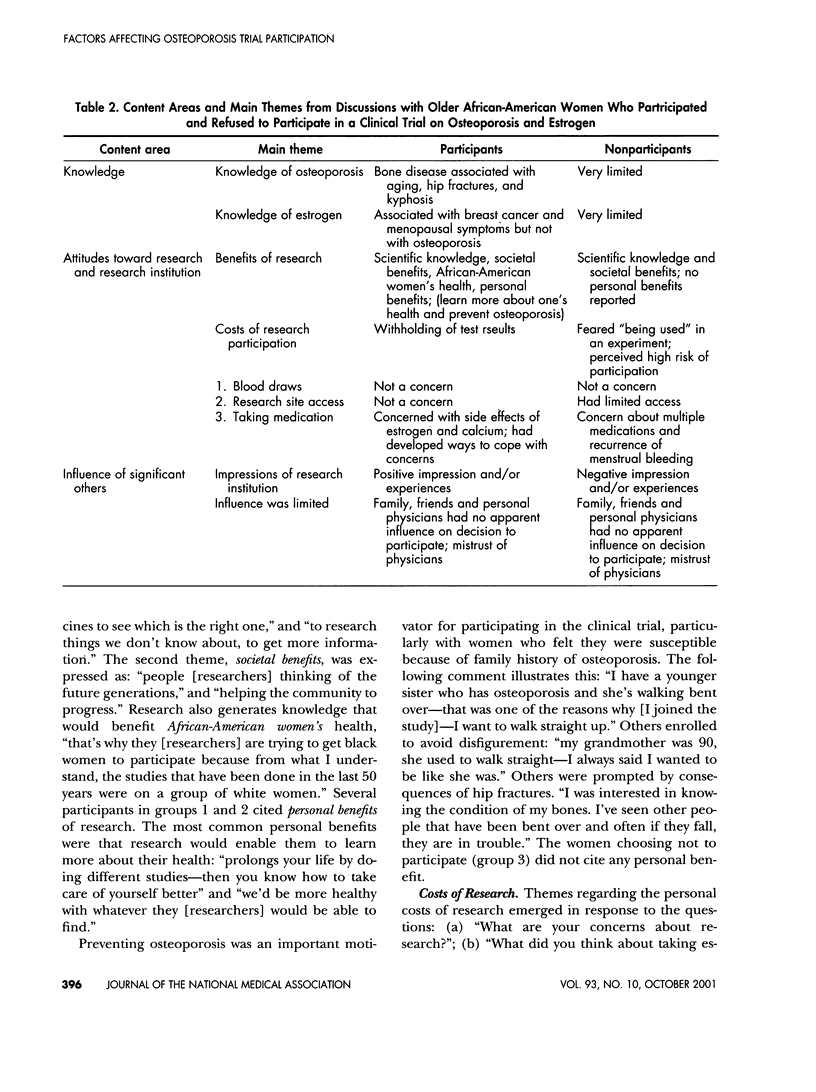
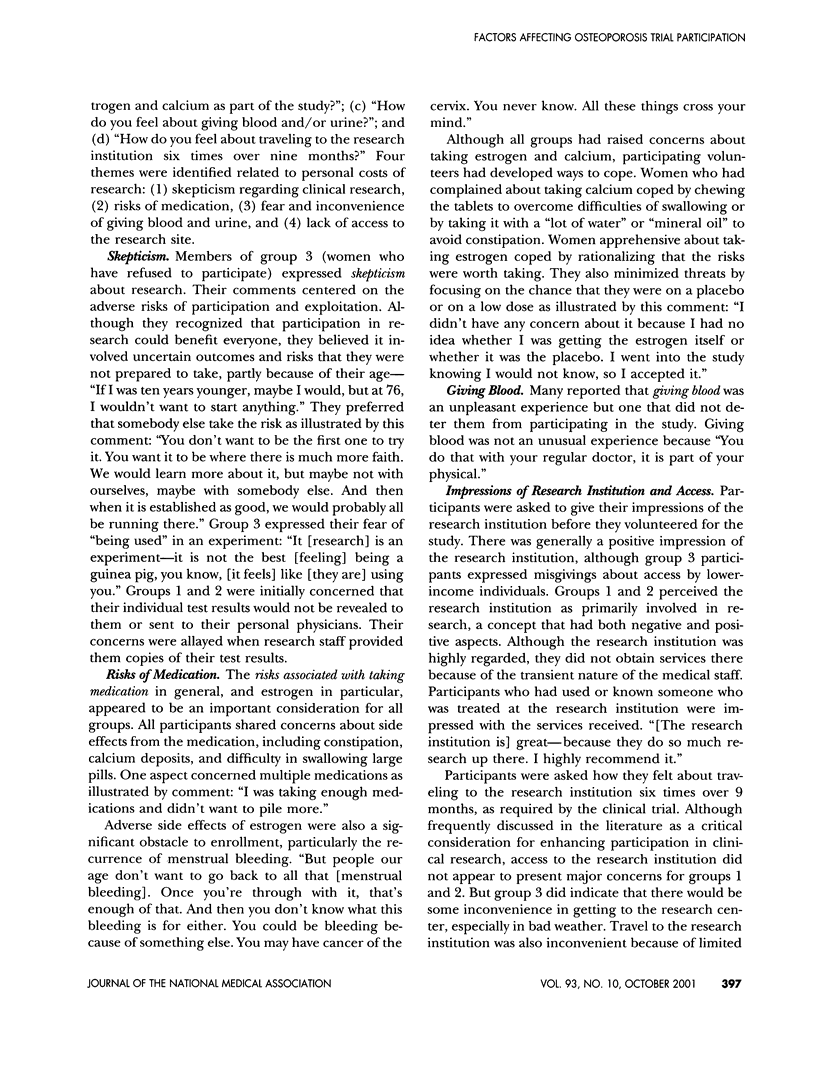
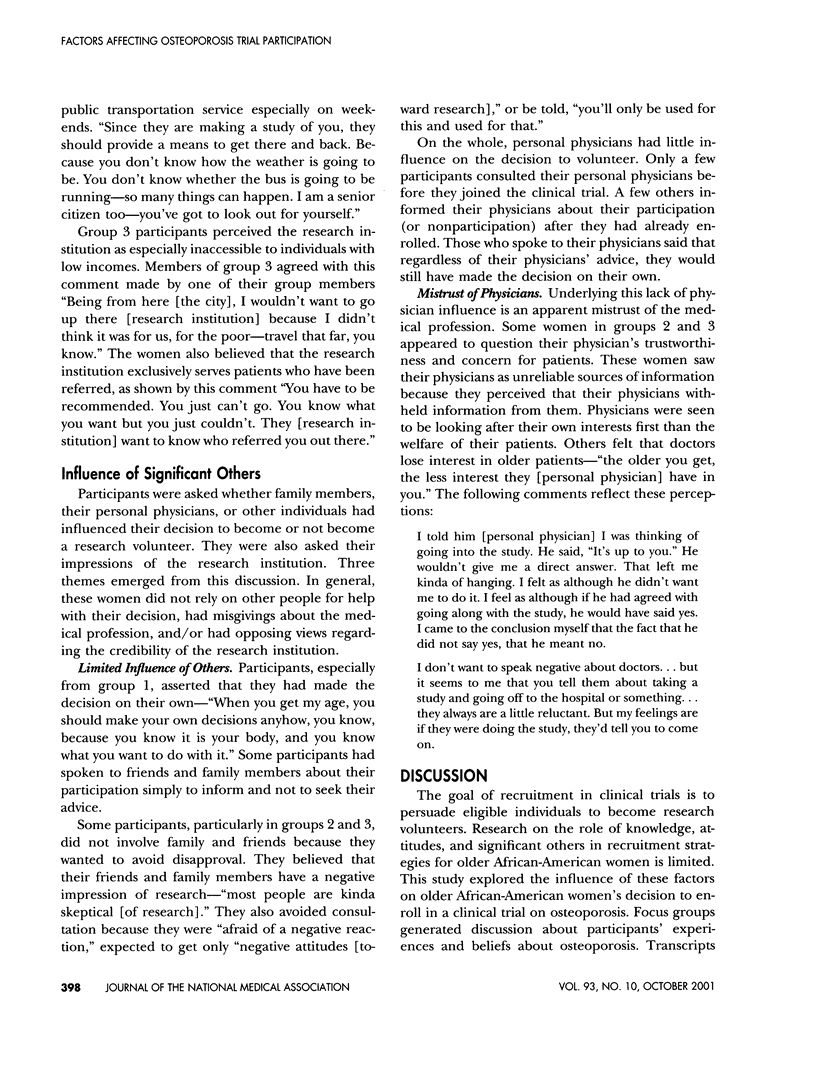
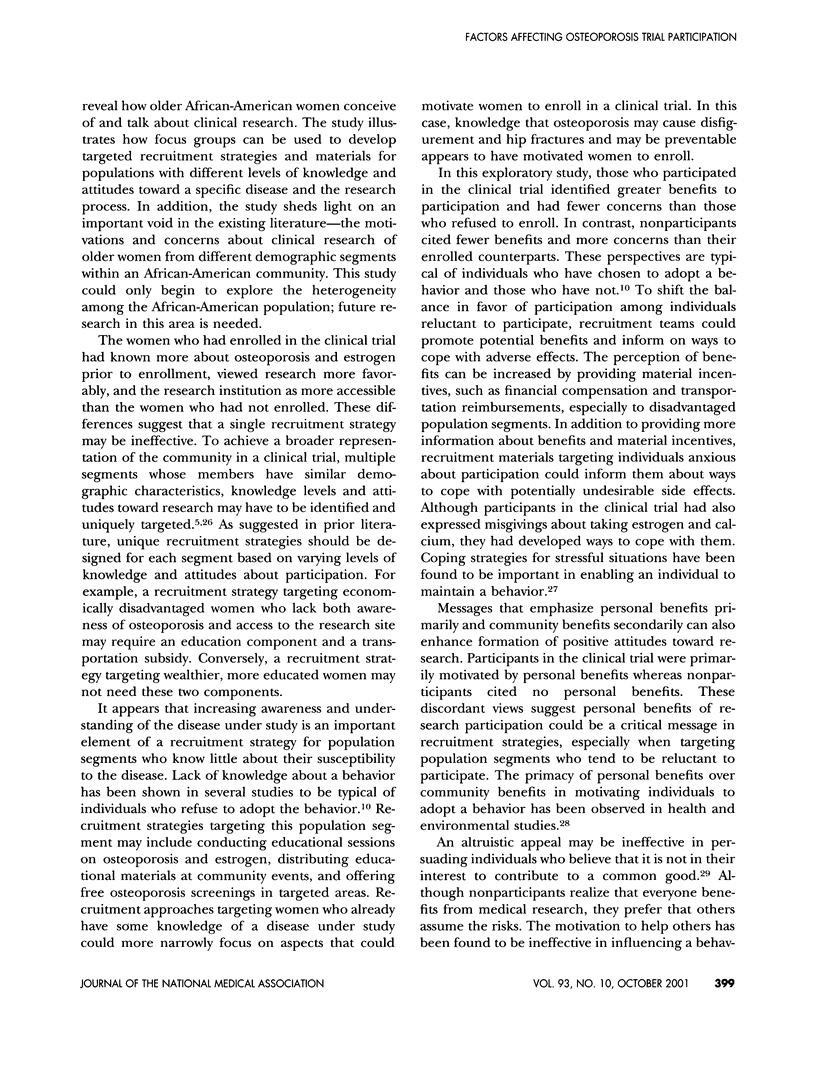

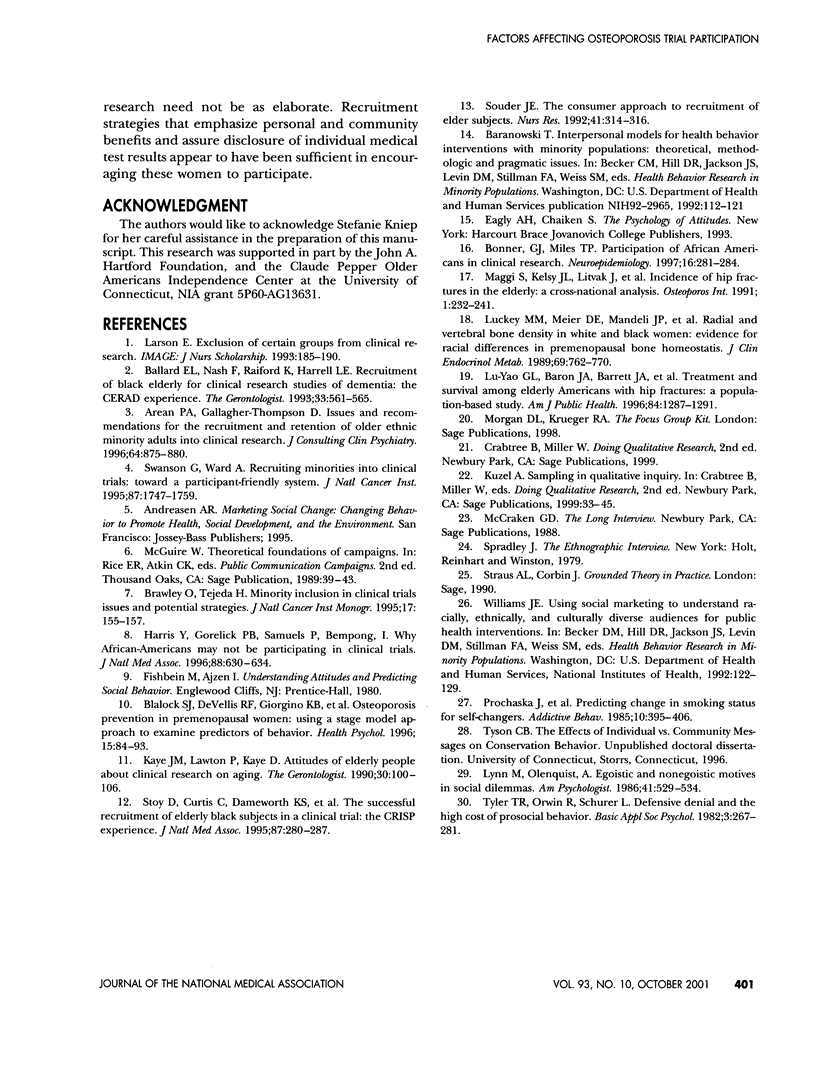
Selected References
These references are in PubMed. This may not be the complete list of references from this article.
- Areán P. A., Gallagher-Thompson D. Issues and recommendations for the recruitment and retention of older ethnic minority adults into clinical research. J Consult Clin Psychol. 1996 Oct;64(5):875–880. doi: 10.1037//0022-006x.64.5.875. [DOI] [PubMed] [Google Scholar]
- Ballard E. L., Nash F., Raiford K., Harrell L. E. Recruitment of black elderly for clinical research studies of dementia: the CERAD experience. Gerontologist. 1993 Aug;33(4):561–565. doi: 10.1093/geront/33.4.561. [DOI] [PubMed] [Google Scholar]
- Blalock S. J., DeVellis R. F., Giorgino K. B., DeVellis B. M., Gold D. T., Dooley M. A., Anderson J. J., Smith S. L. Osteoporosis prevention in premenopausal women: using a stage model approach to examine the predictors of behavior. Health Psychol. 1996 Mar;15(2):84–93. doi: 10.1037//0278-6133.15.2.84. [DOI] [PubMed] [Google Scholar]
- Bonner G. J., Miles T. P. Participation of African Americans in clinical research. Neuroepidemiology. 1997;16(6):281–284. doi: 10.1159/000109698. [DOI] [PubMed] [Google Scholar]
- Harris Y., Gorelick P. B., Samuels P., Bempong I. Why African Americans may not be participating in clinical trials. J Natl Med Assoc. 1996 Oct;88(10):630–634. [PMC free article] [PubMed] [Google Scholar]
- Kaye J. M., Lawton P., Kaye D. Attitudes of elderly people about clinical research on aging. Gerontologist. 1990 Feb;30(1):100–106. doi: 10.1093/geront/30.1.100. [DOI] [PubMed] [Google Scholar]
- Lu-Yao G. L., Baron J. A., Barrett J. A., Fisher E. S. Treatment and survival among elderly Americans with hip fractures: a population-based study. Am J Public Health. 1994 Aug;84(8):1287–1291. doi: 10.2105/ajph.84.8.1287. [DOI] [PMC free article] [PubMed] [Google Scholar]
- Luckey M. M., Meier D. E., Mandeli J. P., DaCosta M. C., Hubbard M. L., Goldsmith S. J. Radial and vertebral bone density in white and black women: evidence for racial differences in premenopausal bone homeostasis. J Clin Endocrinol Metab. 1989 Oct;69(4):762–770. doi: 10.1210/jcem-69-4-762. [DOI] [PubMed] [Google Scholar]
- Maggi S., Kelsey J. L., Litvak J., Heyse S. P. Incidence of hip fractures in the elderly: a cross-national analysis. Osteoporos Int. 1991 Sep;1(4):232–241. doi: 10.1007/BF03187467. [DOI] [PubMed] [Google Scholar]
- Prochaska J. O., DiClemente C. C., Velicer W. F., Ginpil S., Norcross J. C. Predicting change in smoking status for self-changers. Addict Behav. 1985;10(4):395–406. doi: 10.1016/0306-4603(85)90036-x. [DOI] [PubMed] [Google Scholar]
- Souder J. E. The consumer approach to recruitment of elder subjects. Nurs Res. 1992 Sep-Oct;41(5):314–316. [PubMed] [Google Scholar]
- Stoy D. B., Curtis R. C., Dameworth K. S., Dowdy A. A., Hegland J., Levin J. A., Sousoulas B. G. The successful recruitment of elderly black subjects in a clinical trial: the CRISP experience. Cholesterol Reduction in Seniors Program. J Natl Med Assoc. 1995 Apr;87(4):280–287. [PMC free article] [PubMed] [Google Scholar]
- Swanson G. M., Ward A. J. Recruiting minorities into clinical trials: toward a participant-friendly system. J Natl Cancer Inst. 1995 Dec 6;87(23):1747–1759. doi: 10.1093/jnci/87.23.1747. [DOI] [PubMed] [Google Scholar]


